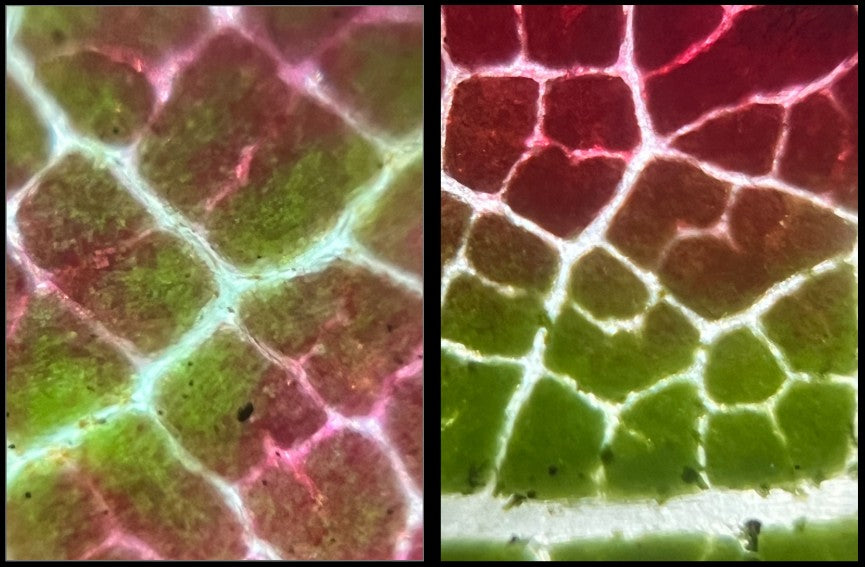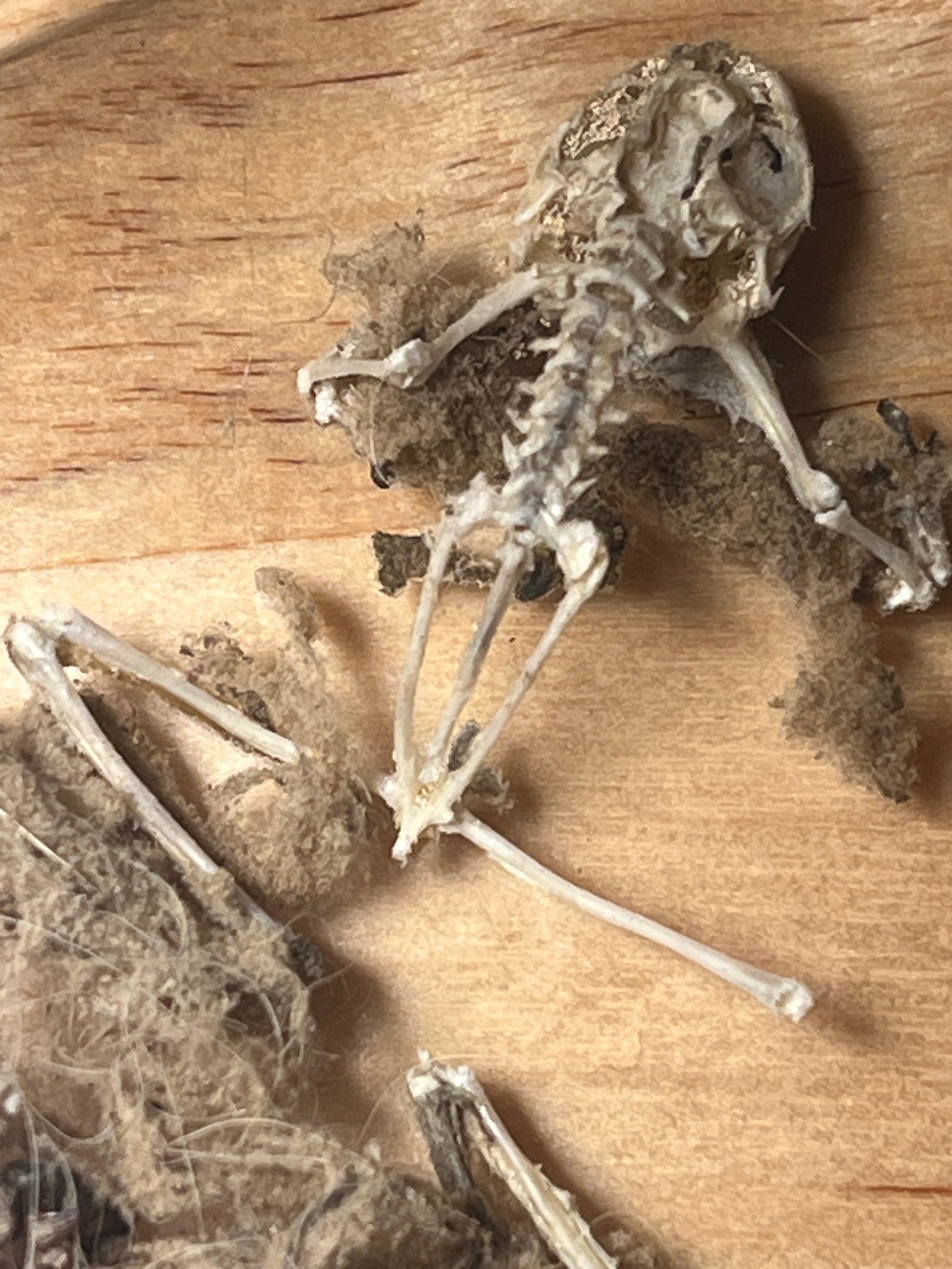This blog is all about seeing what lurks in the shadows - of your slide specimens! While shadows are considered spooky places during the weeks leading up to Halloween, I use them to make myFoldscope 2.0 observations much more interesting. Read on to find out what I saw!

Figure 1. Shadows on the sidewalk
(Photo Credit: Holly A. Stuart)
Creating Microscopic Shadows
Shadows are created when an object blocks the path of light. With a light microscope, the light comes through the back of the microscope, aimed straight at the sample. Because the light hits straight on, any texture on the sample cannot be easily seen. The LED Light Module 2.0 can provide darkfield lighting by shifting the path of light slightly to the side causing it to hit the object at an angle. This angle creates shadows and lets you see the three dimensional qualities of the object. The shadows are where the interesting characteristics of your specimen can be seen. This Microcosmos Post about blackberry lily pollen goes into more detail about how to do this and includes pictures of just how different the pollen grains look with different lighting techniques.
 Figure 2. Picture of the LED light module 2.0 attached to a Foldscope 2.0 for brightfield lighting (left) and shifted to the side for darkfield lighting (right)
Figure 2. Picture of the LED light module 2.0 attached to a Foldscope 2.0 for brightfield lighting (left) and shifted to the side for darkfield lighting (right)
(Photo Credit: Holly A. Stuart)
Using Shadows in Microscopy
Shadows Show Texture
With brightfield lighting you can see that the tomato seed looks like it is hairy on the edges. However, under darkfield lighting, the fuzzy texture of the entire seed becomes clear.

Figure 3. Tomato seed viewed under a Foldscope 2.0 at 50X magnification under brightfield lighting (left) and darkfield lighting (right)
(Photo Credit: Holly A. Stuart)
Money is another sample that is enhanced with darkfield microscopy. When looking at paper money with brightfield lighting, these markings look like they are black and flat. But with darkfield lighting, the hidden color and texture are revealed!
 Figure 4. Hundred dollar bill markings viewed under a Foldscope 2.0 at 50X magnification under brightfield lighting (left) and darkfield lighting (right)
Figure 4. Hundred dollar bill markings viewed under a Foldscope 2.0 at 50X magnification under brightfield lighting (left) and darkfield lighting (right)
(Photo Credit: Holly A. Stuart)
Shadows Reveal Depth
An additional benefit of darkfield lighting is the way it takes a sample from looking two dimensional to one that is three dimensional. I have found that pollen samples are great for creating this effect.
Brightfield lighting makes these marjoram pollen grains look like bubbles of some sort. Shifting the LED light module to the side to view them under darkfield lighting, turns them into three dimensional spheres!

Figure 5. Marjoram pollen grains viewed under a Foldscope 2.0 at 140X magnification plus 5X digital zoom (top row) and 340X magnification plus 5X digital zoom (bottom row) using brightfield lighting (left side) and darkfield lighting (right side)
(Photo Credit: Holly A. Stuart)
The same effect happens with the christmas cactus pollen using brightfield lighting from a lightbox. Under brightfield conditions, it looks like a two dimensional drawing. With the LED light module 2.0 in darkfield mode, you can clearly see the spheres of the pollen grains on all sides of the filament!
 Figure 6. Christmas cactus pollen grains viewed under a Foldscope 2.0 at 140X magnification plus 5X digital zoom on phone using brightfield lighting (left) and darkfield lighting (right)
Figure 6. Christmas cactus pollen grains viewed under a Foldscope 2.0 at 140X magnification plus 5X digital zoom on phone using brightfield lighting (left) and darkfield lighting (right)
(Photo Credit: Holly A. Stuart)
I hope these pictures inspire you to peer into the darkness of shadows to learn more about the microscopic features of your samples. Have you used darkfield lighting with your Foldscope 2.0? Use your LED Light Module 2.0 to create shadows and discover the hidden beauty of the dark spaces in the microscopic world. Share your images and thoughts on the Microcosmos. Be sure to tag us on social media when you post the results of your explorations, creations, and discoveries! We love to see how Foldscopers around the world are using their Foldscopes in new and innovative ways!
Facebook: @Foldscope
Instagram: @teamfoldscope
Blue Sky: @teamfoldscope.bsky.social
TikTok: @foldscope
Threads: @teamfoldscope
Twitter: @TeamFoldscope



